“Unlock the Timeless Art of Saree Draping – Experience the Rich History of India!”
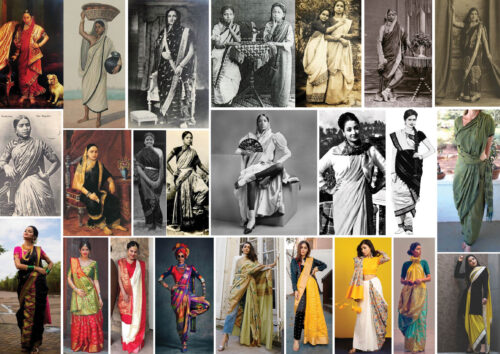
- The Evolution of Saree Draping Styles Through the Ages
- How Mughal fashion got influenced by rich culture of Indian Saree
- The Impact of Colonialism on Saree Draping Styles
- How to drape
- Exploring the Different Regional Variations of Saree Draping
- The Revival of Traditional Saree Draping Styles in Modern Times
- Top Saree Drapers Of India
The History of Saree Draping is a long and varied one, stretching back centuries. It is believed that the art of saree draping originated in India, where it has been a part of the culture for centuries. The saree is a traditional garment worn by women in India, and the way it is draped is an important part of the culture. Different regions of India have their own unique styles of saree draping, and the style of draping can vary depending on the occasion. Over the years, saree draping has evolved and adapted to changing trends and styles, but the basic principles remain the same.
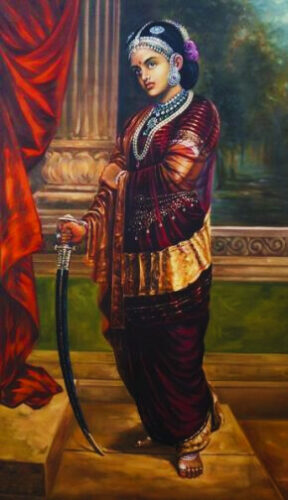
The Evolution of Saree Draping Styles Through the Ages
The saree is a timeless garment that has been around for centuries, and its draping style has evolved over the years. From the traditional pleats and pallu of the past to the modern-day drapes and twists, the saree has come a long way. So the History of Saree Draping is made of.
- The Indus Valley Civilization (2500 BCE – 1750 BCE): The earliest depictions of sarees are found in the Indus Valley Civilization. Women wore a garment that covered their bodies from the waist to the ankles, leaving the midriff bare. This garment was known as a “dhoti” and was draped in a way that allowed for ease of movement.
- The Maurya Empire (322 BCE – 185 BCE): During the Maurya Empire, women started wearing the “uttariya”, a garment that was draped over the shoulder and tucked into the waist. This style of draping was popular among the royalty and the upper classes.
- The Gupta Empire (320 CE – 550 CE): The saree, as we know it today, started to take shape during the Gupta Empire. The saree was draped in a way that covered the entire body, and the pallu (the part of the saree that drapes over the shoulder) was pinned to the blouse.
- The Mughal Empire (1526 CE – 1857 CE): The Mughal Empire brought a new style of draping the saree. The pallu was draped in a way that covered the head, leaving the face exposed. This style was known as the “Mughal style”.
- The British Raj (1858 CE – 1947 CE): During the British Raj, the saree underwent a significant change. Women started wearing blouses, which were previously not worn with sarees. This gave rise to a new draping style, where the pallu was draped over the shoulder and pinned to the blouse.
- Modern Times: Today, saree draping styles have become more diverse and creative. Women experiment with different draping styles, such as the Bengali style, the Gujarati style, the Maharashtrian style, and many more.
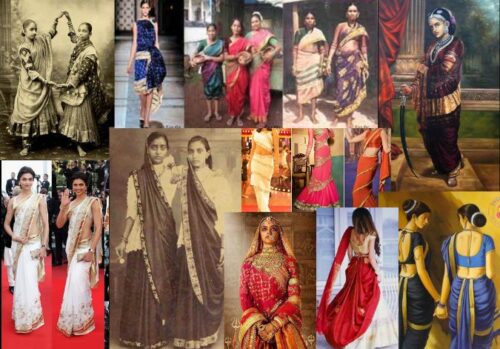
How Mughal fashion got influenced by rich culture of Indian Saree
India was already very rich in styling and decorating garment, ornaments and vast variety of designing skills. India had vast knowledge of rich fabrics.
Mughal rulers were known for their love for luxury and opulence, and this was reflected in their fashion choices. During the Mughal era, the Mughal rulers and their court were heavily influenced by the rich culture of Indian sarees, which were an integral part of women’s clothing in India.

Sarees were already a popular attire for women in India before the Mughal era, but during Mughal period, the style and design of sarees underwent significant changes. The Mughal rulers had a significant impact on the colors, patterns, fabrics, and draping styles used in sarees. To Know more about Silk Dupattas from Banaras, choose this link: https://guisegarner.com/2023/01/banarasi-silk-dupatta/
One of the significant act of Mughal rulers was the use of fine fabrics such as muslin, silk, and velvet in the production of sarees. These fabrics were sourced from different parts of India and were considered the most luxurious and high-quality materials of the time.
Mughals also used intricate embroidery and embellishments to sarees, such as zardozi work, beadwork, and gold or silver threadwork. These decorations added a touch of luxury and opulence to sarees, making them fit for the Mughal court.
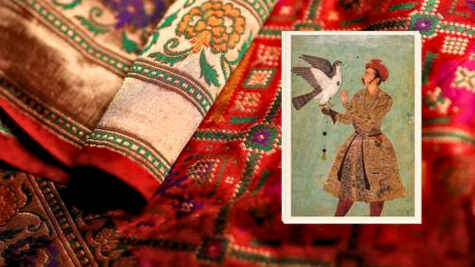
Mughal rulers also had an impact on the colors and patterns used in sarees. Mughal-style sarees were often made in bright colors, such as red, green, and gold, and were adorned with intricate patterns and designs, such as floral motifs and geometric shapes.
Moreover, the Mughals also influenced the way sarees were draped. The Mughal-style saree was draped over the head and the upper body, with the pleats tucked into the waistband at the front. The pallu was then draped over the head and shoulders, forming a veil-like effect.
The influence of Indian sarees on Mughal fashion was not limited to women’s clothing. Men also wore saree-like garments, such as the “angarkha,” a traditional Indian garment that resembled a long tunic or coat, and the “dhoti,” a long piece of cloth draped around the waist and legs.
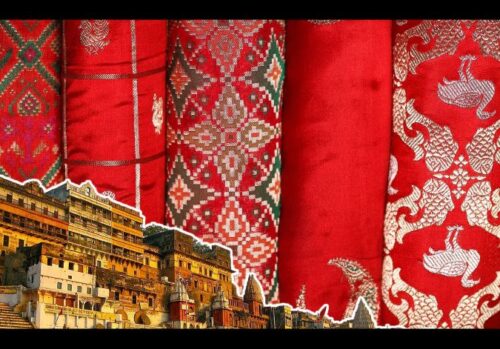
In conclusion, the rich culture of Indian sarees had a significant influence on Mughal fashion, and the Mughals added their touch of luxury and opulence to sarees, making them even more glamorous and elegant. The combination of Indian sarees and Mughal fashion resulted in the creation of some of the most exquisite and beautiful pieces of clothing in history.
The Impact of Colonialism on Saree Draping Styles
Colonialism has had a lasting impact on the way sarees are draped around the world. Before the British arrived in India, sarees were draped in a variety of styles, depending on the region and the occasion. But when the British colonized India, they brought with them their own style of saree draping, which was adopted by many Indian women.
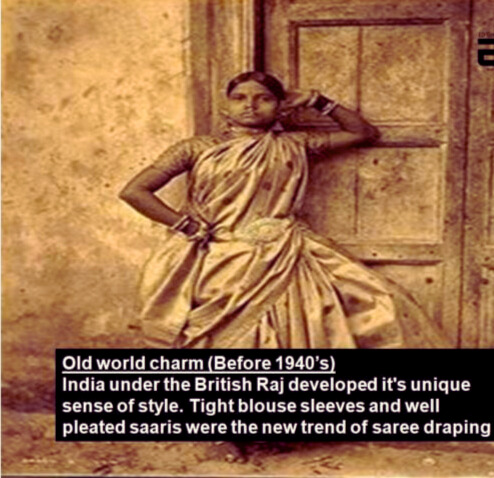
The impacts of colonialism on saree draping styles can be seen in several ways. During the British rule in India, there was a shift in the way sarees were worn, which was influenced by Western fashion.
One of the most significant changes was the introduction of the “blouse,” which was not traditionally worn with sarees. British women wore blouses with their skirts, and this fashion trend was eventually adopted by Indian women who started wearing blouses with their sarees. The blouse became an essential part of saree draping, and it is now considered a standard component of the outfit.
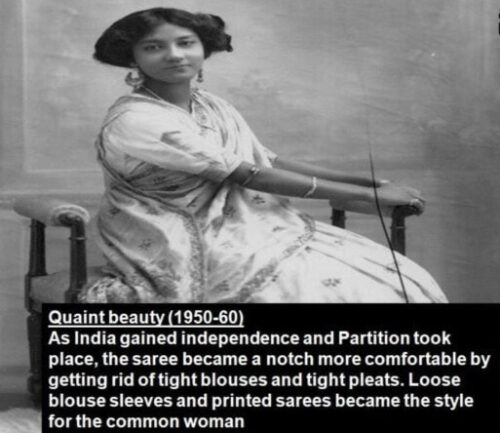
Another impact of colonialism on saree draping styles was the introduction of new fabrics and textiles. The British brought with them new materials, such as cotton, silk, and wool, which were used to make sarees. This led to changes in the way sarees were designed and draped, as these new fabrics were more comfortable to wear and allowed for more intricate designs.
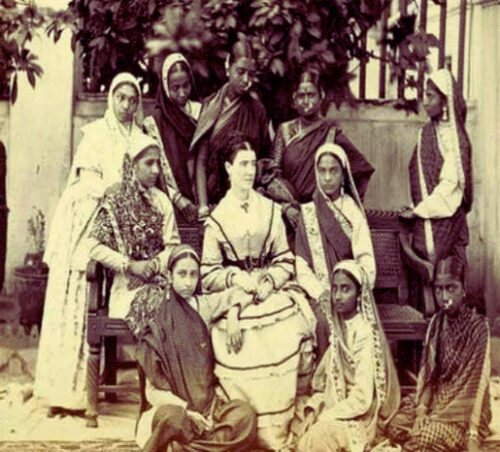
Finally, colonialism also led to a shift in the way sarees were draped. The traditional way of draping the saree was to wrap it around the body and then drape the pallu (the loose end of the saree) over the shoulder. However, during the colonial period, the saree was draped in a more modest way, with the pallu covering the head and upper body. This was influenced by the Victorian fashion trends of the time and was seen as more modest and proper.

In conclusion, colonialism had a significant impact on the way sarees were worn and draped in India. It introduced new fabrics and styles, which influenced the traditional saree draping styles. The introduction of the blouse and the shift in the way the saree was draped are some of the most significant impacts of colonialism on saree draping styles.
The impact of colonialism on saree draping styles is undeniable. While the Nivi style is now the most popular style of saree draping, there are still many traditional styles that are still practiced in some parts of India. So, while the British may have brought their own style of saree draping to India, they have also helped to preserve the traditional styles of saree draping that have been practiced for centuries. And that’s something to smile about!
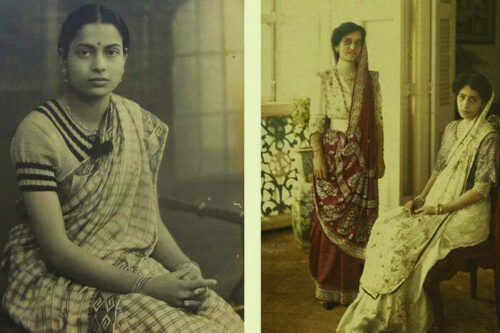
How to drape
There are many ways to drape a saree or should say The 6 yard beauty. Few and most common of them are given below in “Exploring the Different Regional Variations of Saree Draping”.
Important tips for draping a Saree-
- Avoid wearing satin petticoats as they tend to cling and cause static. Opt for mulmul fabric instead. In case you must use satin, ensure to wear a light mulmul layer underneath to prevent static issues.
- Prior to using a safety pin on your sari, consider inserting a small bead or pearl first. This simple trick will prevent your sari from getting entangled in the coil section of the pin and avoid tearing.
- Always ensure that your petticoat is shorter than your sari’s length to avoid any peeking out when you walk or sit down. This will maintain a neat and elegant appearance.
- To give it a flair lehenga look wear can-can petticoat underneath or simply add can can flair to your existing one.
- For a slim Saree look like Nivi style wear Slim and stretchable petticoat. It is available at many Online and offline stores as well.
Exploring the Different Regional Variations of Saree Draping
When it comes to History of Saree Draping, there are many regional variations that can be explored. There are more than 60 to 80 regional drapes from about 15 states. From the traditional Gujarati style to the more modern Bengali style, each region has its own unique way of draping a saree. Let’s take a look at some of the different regional variations of saree draping.

Here we have few Major regional Variation And How It is Drapped
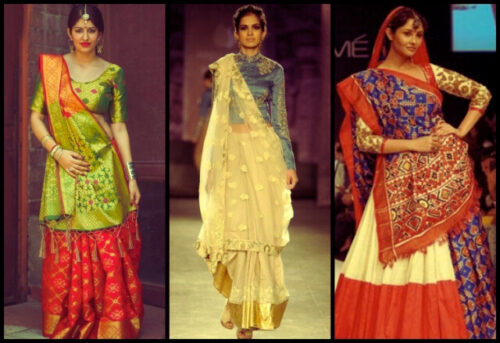
The Gujarati style of saree draping is one of the most popular styles in India. It is characterized by a pleated pallu that is draped over the shoulder and a pleated skirt that is tucked into the waist. This style is usually worn with a blouse and a dupatta.
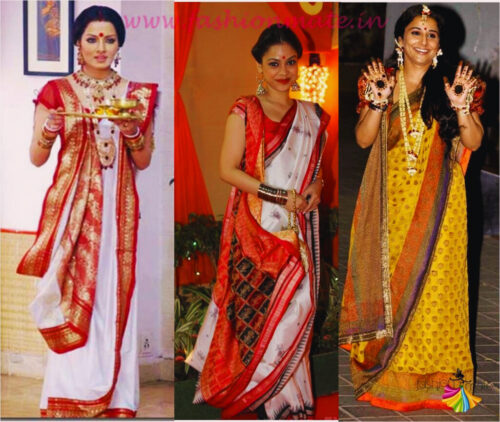
The Bengali style of saree draping is a bit more modern. It is characterized by a pleated pallu that is draped over the shoulder and a pleated skirt that is tucked into the waist. This style is usually worn with a blouse and ocassionaly with dupatta. The pallu is usually draped in a way that it covers the entire back.
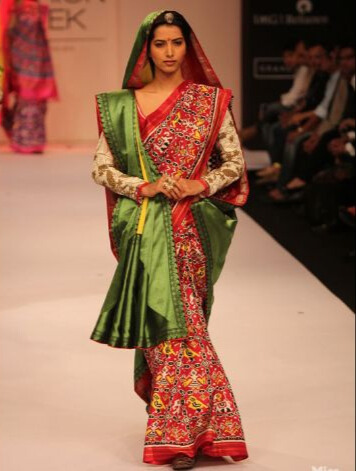
The Marwari style of saree draping is a bit more traditional. It is characterized by a pleated pallu that is draped over the shoulder and a pleated skirt, tucked into the waist. This style is usually worn with a blouse and a dupatta. The pallu is usually draped in a way that it covers the entire back and is usually decorated with intricate embroidery.

In Karnataka alone which is known to be the fulcrum of silk and hence one of the largest producers of silk sarees. There are more than 9 to 10 varieties of documented drapes that belongs to Karnataka. They are IyengariKachhe, Bhootheyara, Mysore Shaili, Coorgi, YakshaganaKase, HalakiVokkaliga.
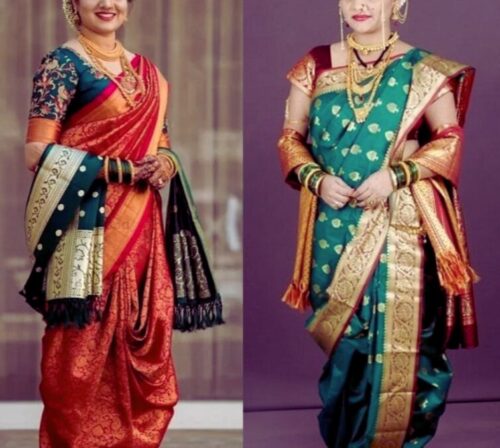
The Maharashtra style of saree draping, also known as the nauvari style. It is a unique way of draping the saree that originated in the state of Maharashtra, India. Unlike other styles of saree draping, the nauvari style involves draping the saree between the legs and tying it securely at the waist, creating a comfortable and practical drape. The remaining fabric is then draped over the shoulder in a way that highlights the intricacies of the saree’s design.
The Maharashtra style of saree draping is often seen as a symbol of empowerment. And independence for women, and it is a popular choice for traditional Maharashtrian weddings and other cultural events.
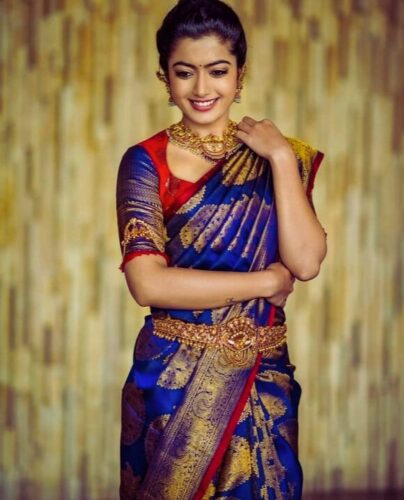
The Tamil style of saree draping is a bit more traditional and is characterized by a pleated pallu that is draped over the shoulder and a pleated skirt that is tucked into the waist. This style is usually worn with a blouse and a dupatta. The pallu is usually draped in a way that it covers the entire back and is usually decorated with intricate embroidery.

The North style of saree draping is known for its simplicity and ease of wear. It involves draping the saree around the waist and over the left shoulder, with the pallu (the loose end) covering the head and flowing down the back. The saree is usually pleated at the front, but the number of pleats and the width of the pleats may vary. This style is popular in northern India and is often worn with a long-sleeved blouse and traditional jewelry.

Mundum neriyatum (Malayalam: മുണ്ട് നേരിയത്; settu-mundu or mundu-set) is the traditional clothing of women in Kerala, a state in southwestern India. It is the oldest remnant of the ancient form of the sari which covered only the lower part of the body. In the mundum neriyatum, the most basic traditional piece is the mundu or lower garment which is the ancient form of the sari denoted in Malayalam as tuṇi (meaning cloth), while the nēriyatu forms the upper garment the mundu.
The mundum neriyatum consists of two pieces of cloth, and could be worn in either the traditional style with the nēriyatu tucked inside the blouse, or in the modern style with the nēriyatu worn over the left shoulder.
Nivi Style: The Nivi style is believed to have originated in Andhra Pradesh and has since spread throughout India. It is a timeless and classic way to wear a saree, and it continues to be a popular choice for women of all ages. One of the advantages of the Nivi style is that it can be adapted to suit different body types and personal preferences. For example, the saree can be draped higher or lower on the waist to create different looks, and the pleats can be made smaller or larger depending on the desired effect. Nivi style of saree draping is the most popular draping style all over.
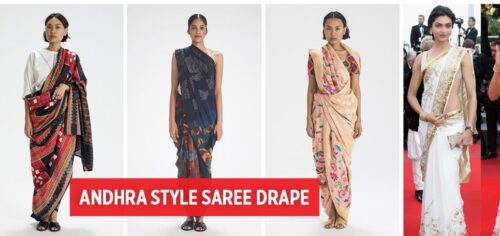
Besides of Nivi there are Kappulu , Gochi kattu, Mukkala Chira, Gudakattu styles from Andhra pradesh. Each of them have a beautiful appearance and comfort. Interestingly, the way women generally drape saree with pallu over the left shoulder and neatly done pleats in the front has its origin in Andhra Pradesh. The six drapes from Odisha include Kuncha, Kotapad, Santhal, Ghorapindha, Kaccha and its variations, along with Saktapar weave.
No matter which regional variation of saree draping you choose, you can be sure that you will look stunning! So, go ahead and explore the different regional variations of saree draping and find the one that suits you best. Who knows, you might even find a new favorite style!

The Revival of Traditional Saree Draping Styles in Modern Times
In modern times, it seems like the traditional saree draping styles of India have been forgotten. But, in recent years, there has been a revival of these traditional styles, with a modern twist.
Gone are the days when the saree was just a plain piece of cloth draped around the body. Now, it is a fashion statement. From the traditional Nivi style to the more modern Lehenga style. There is something for everyone.
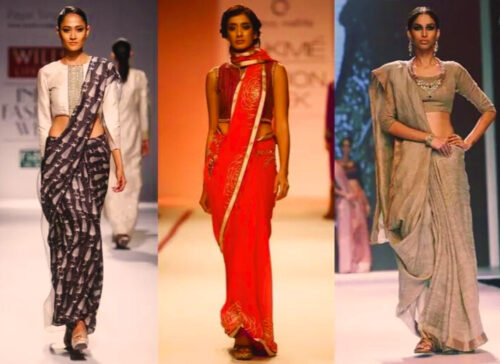
The Lehenga style is a more modern take on the traditional saree draping style. It is a combination of the Nivi style and the traditional Lehenga style. It is perfect for those who want to make a statement with their saree.
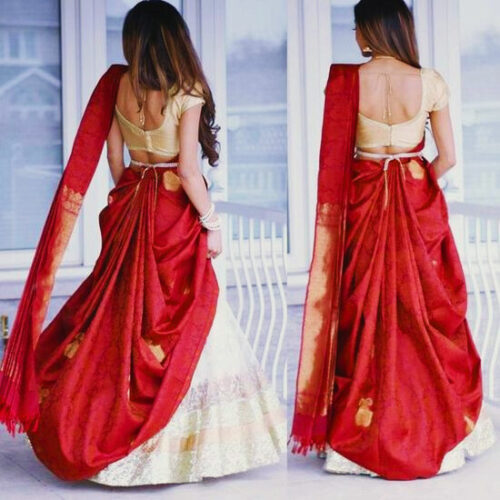
Butterfly style is a kind of lahanga style. Majorly the dupatta drapes like butterfly wings by pleating and tucking on the backside of waist.The bottom side of dupatta than get spread following by Lehanga width.
Fusion style of draping is the most popular in modern time. A mix of Tradition and Modern drapes.
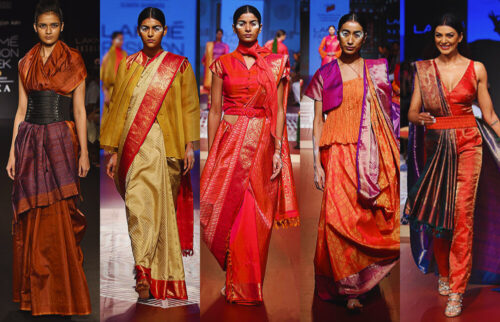
The Dhoti style is another modern take on the traditional saree draping style. It is a combination of the Nivi style and the traditional Dhoti style. Another is Pant Style Drape which is a touch with western paired with Pant and wrapping Half Saree style showing-off pant. Saree with Belt Drapping, one of inspired from traditional gold, pearl or silver belts that is being used from ancient times, fusioned with modern belts made of leather or fabric and other materials. Another one is with Jacket, it could be embroidery, solid or any patterns from short to long. This can be wear above the saree pallu or inside it.
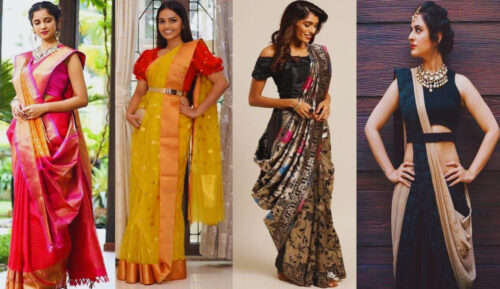
The Half-Saree style is a combination of the Nivi style and the traditional Half-Saree style. It is perfect for those who want to look stylish and comfortable at the same time.
The Nivi style is the most popular and traditional way of draping a saree. It is a simple yet elegant style that is perfect for formal occasions. It is also the most comfortable way to wear a saree.

The Bollywood style is a combination of the Nivi style and the traditional Bollywood style. It is perfect for those who want to look glamorous and stylish at the same time. Mumtaz Style drape is one which came from bollywood from the era of 70’s. It got it went viral becoz of bollywood star Mumtaz Askari madhvani. One is Open Pallu Drape from very old eras but again can be said populared by bollywood.
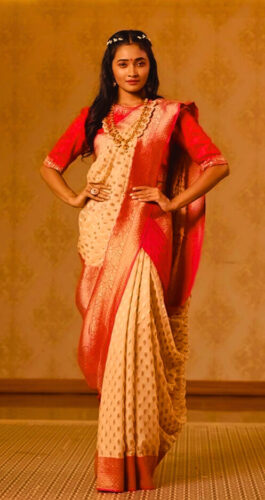
Mermaid Drape is also one of awsome drapes that I found and become my favourite too.. Platting style is similar to Nivi style and pallu draping is followed like Lehanga pallu.
No matter what style you choose, you can be sure that you will look stunning in your saree. So, go ahead and embrace the revival of traditional saree draping styles in modern times!
Top Saree Drapers Of India
Here we have few most popular saree drapers from India:
The first two names that comes are Kalpana Shah and Dolly Jain.
70-year old Kalpana Shah, an Indian entrepreneur and stylist born on 30 November 1948, is renowned for her expertise in sari draping since 1985. Her birth in Gujarat Jain Family of jewelers spend her 10 years of childhood in Surat. Further she Based in Mumbai, India; and offers workshops, lessons, and draping services for formal occasions from her residence on Altamount Road.
Kalpana Shah’s sari draping artistry has graced weddings and formal functions of prominent business houses such as the Birlas, Hindujas, Dhoots, Ruias, Ambanis, Goels, Wadias, and the Mittals in Delhi and London. In 2012, Kalpana Shah published her book titled “The Whole 9 Yards,” which was later followed by the release of her app “Learn Sari” in 2014.
On You tube- https://www.youtube.com/channel/UC9wmZFnjZRPe6GSazNZC7vw
On Instagram- https://www.instagram.com/kalpana__shah/?hl=en
Kalpana Shah, the skilled sari draper from Mumbai, India, has lent her artistry to drape saris for Bollywood’s finest celebrities, including Deepika Padukone, Aishwarya Rai, Sonam Kapoor, Kareena Kapoor, Katrina Kaif, Nargis Fakhri, Huma Qureshi, and Jacqueline Fernandez.
When it comes to saree draping how we can forget Dolly Jain, a Kolkata based saree draper, famed for creative styles, holds celebrated status in Indian fashion industry with 15 year work experience. “It’s the quickest way to get dressed and when draped correctly, it can never hinder mobility,” says the celebrity drape artist.
From a young age, 43 year old Dolly Jain’s passion for saree draping grew, recognizing its significance in enhancing women’s beauty and confidence. Dolly Jain’s remarkable talent and dedication have garnered her numerous awards and accolades. Dolly’s expertise led her to set a record in 2019, draping a saree in 325 distinct ways within a remarkable 18.5 seconds for each.
On You tube- https://www.youtube.com/channel/UCUBipbd42HLtLGqwDvvJOFw
On Instagram- https://www.instagram.com/dolly.jain/?hl=en
On Facebook- https://www.facebook.com/DollyJainStylist/
Featured in fashion magazines, she’s a renowned name in saree draping and styling. She charges Rs. 35,000 to 2,00,000 to drape a saree. Formal training refined her skills, leading to her signature style. Dolly Jain’s expertise draws Bollywood stars, including Deepika Padukone, Priyanka Chopra, Aishwarya Rai Bachchan, and others, for red carpets and weddings.
Others are our many famous fashion Designers making the 9 yard beauty at it’s best.
The saree draping styles have evolved over time, reflecting changes in culture, tradition, and fashion. Despite these changes, the saree remains an iconic and timeless garment that continues to be worn by women across India and the world.

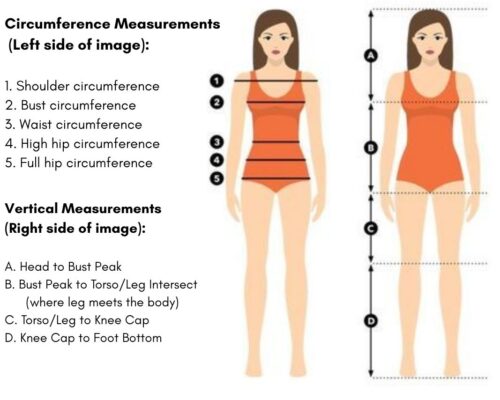



nice info
Pingback: Banarasi Silk Saree - A Luxury - Guisegarner.com